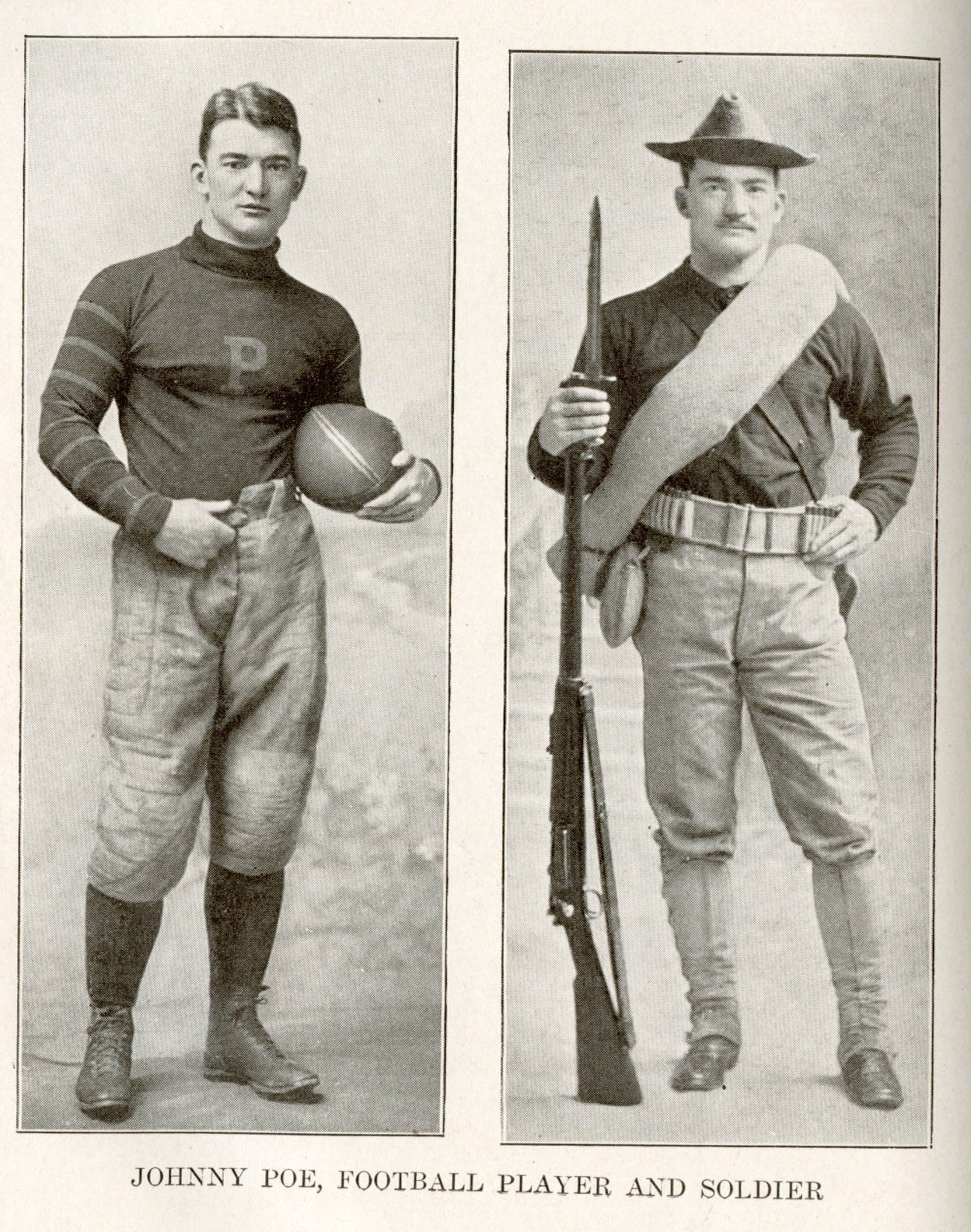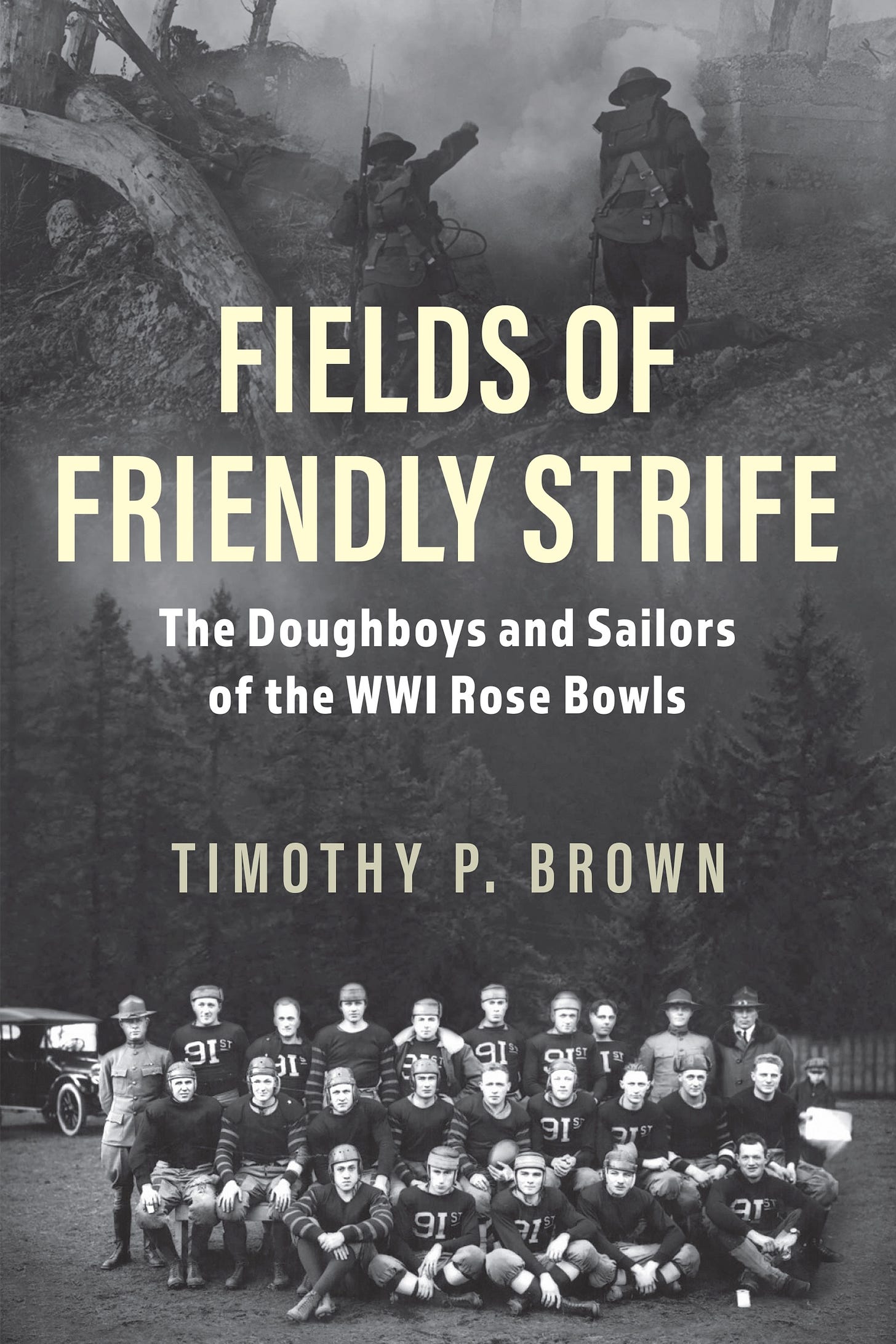Veterans Day and Johnny Poe
The Poe family of Baltimore is central to Princeton’s football lore. The six brothers played for the Tigers between 1882 and 1901. Two were All-Americans, and most were significant contributors in their day.
Samuel Johnson Poe (1882-1883)
Edgar Allan Poe (1887-1890)
John Prentiss Poe Jr. (1891-1892)
Neilson “Net” Poe (1895-1896)
Arthur Poe (1896, 1898-1899)
Gresham Poe (1901)

Of the six, five settled into lives of normalcy, with several gaining prominent positions in state government or business, but Johnny chose the road less traveled.
A tribute following his death compared him to others who played in the 1892 Princeton-Penn game, saying:
The men who played in that football game of long ago remember only dimly now what it feels like to lock arms with other men and to fight as they fought that day. They’re “settled businessmen.” They spend their mornings arguing over “deals”; they drowse in leather armchairs after dinner at the club. The thrill of bodily encounter has died out in them long ago.
But there was one of them who “courted adventure like a mistress” all his life long. Not for him the easy chair in the corner, nor the dull treadmill of business. The heady wine of romance ran through his veins and drove him on and on.
McCoy, Samuel, ‘Hero’s Death Ends The Career Of Sunny “Johnny” Poe,’ Pittsburgh Press, November 14, 1915.
As the third of the Poes to play for Princeton, Johnny was a varsity running back as a freshman and sophomore in 1891 and 1892, finishing third and second on the team in touchdowns scored those years. However, he struggled academically and left school after several semesters.

Not long after leaving Princeton, Johnny found himself in the mining camps of Nevada, later joining the state mounted police to help maintain order. He moved on to gold mining in New Mexico, and when the Spanish-American War broke out, Johnny enlisted in the 5th Maryland to get into the action. Unfortunately for him, the 5th Maryland never left its training camp in Florida.
Still seeking adventure, he joined the Army’s 23rd Regiment before it shipped to the Philippines, but as a general’s orderly, he never saw action. Next, Poe enlisted in the Marines, volunteering for duty in the Panamanian revolution, but again saw no action. His next stop came as an artillery captain in the Honduran Army during their 1907 war with Nicaragua. Then, without another war worth fighting, Johnny worked as a surveyor on the Alaska-British Columbia border.
Between all his adventures, Johnny coached Virginia’s football team in 1893 and 1894, Navy’s team in 1896, and volunteered time with Princeton’s team whenever he was in the U.S.
The story goes that he was on Princeton’s practice field in 1912 shortly after university president, Woodrow Wilson, was elected the U.S. President. Wilson, who had been the football team manager as an undergrad and faculty advisor in the past, came out to observe practice and spent most of an hour chatting with Poe about football days gone by.
Poe’s next adventure would be his last. When WWI broke out, he sailed to England and enlisted in the British Army as a private, serving with an artillery unit behind the lines. Seeking greater proximity to the action, he transferred into the Black Watch, a regiment of Scottish Highlanders that saw significant action.
During the Battle of Loos, near Ypres, Poe and a fellow soldier were carrying shells across an open field when Poe was shot in the stomach and killed. Buried nearby, his grave could not be located after the hostilities ended.
In Johnny’s honor, his Princeton teammates created the John Prentiss Poe, Jr., Football Cup, now known as the Poe-Kazmaier Cup, Princeton’s highest football honor.
A veteran of the U.S. Army and Marines, the Honduran Army, and the British Army, Johnny Poe now rests easy, somewhere in a Flanders field.
Fields of Friendly Strife examines the intersection of football and the military by telling the story of the military teams that played in the 1918 and 1919 Rose Bowls.




Were any of this celebrated family descended from the author of "The Raven"?